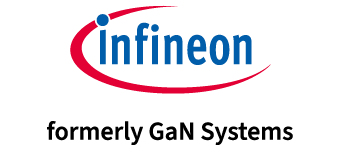GaN Is the Key to Unlocking Power Possibilities: Myths Dispelled!
Join us as we tackle widespread misconceptions about gallium nitride (GaN) power semiconductors. We’ll dispel the mistaken belief that GaN systems are unproven and therefore inappropriate for widespread use. We will put these concerns to rest and discuss the benefits and opportunities of using GaN.
This is the second of four posts within the series, click here to access the others.
MYTH #2:
GaN Technology Is Unproven And Unreliable
OVERVIEW:
- Historical concerns about the reliability of GaN power semiconductors have curtailed mainstream adoption. Yet, the fact is that GaN semiconductors are currently in use by OEMs and Tier 1 companies in commercial products across diverse markets, where the demand for power electronics is a requisite for business competitiveness.
- Companies have released innovative commercial products and systems that take advantage of GaN semiconductors. Businesses are creating entirely new classes of smaller, lower cost, more efficient power systems that will both redefine industries and facilitate competitive positioning with opportunities for new market share.
- GaN power semiconductors have surpassed the criteria of the test suites of leading industry organizations such as JEDEC. Recently, 氮化镓系统 (GaN Systems) announced it has surpassed 10,000 hours of qualification testing for its GaN E-HEMT devices. This is 10X the 1,000-hour requirement to meet JEDEC qualification.
INTRO:
When and how does a technology move from being viewed as unproven to being the product of choice by forward–thinking senior executives and business leaders? These leaders know that by embracing new technology they can improve their current product offerings and create entirely new classes of innovative solutions and systems. These are the keys to their competitive future.
In the past, GaN power semiconductors were sometimes described as ‘unproven’ and not ready for widespread adoption in the products and systems of some of the most important and power-reliant industries of the global economy.
Today, nothing could be further from the truth.
GaN semiconductors are part of a world-class supply chain. They are in use by many companies in industries including consumer AC adapters, data center power supplies, renewable energy storage and industrial motor drives.
Take note: GaN semiconductors have exceeded the reliability tests of industry standards, as well as the tests of real world use in challenging markets that don’t tolerate failures including space, military, and factory environments.
Join us now as we take a brief look at the myth centered on the concept of ‘unproven,’ and two dual elements – reliability and market applicability.
1. Reliability: Proven In The Lab And Marketplace
The assurance of product-level reliability can be a complex undertaking. As in other industries, there are three key ways that we can understand and express the reliability for GaN semiconductors: industry organization specifications, design validation test results, and systems in real world use.
With power semiconductors that can be used in a diverse range of products and conditions, it can be challenging to comprehensively demonstrate and document all reliability use cases. Additionally, since the reliability tests and test suites of GaN are different from those for silicon-based solutions, misinterpretation and misunderstanding can arise.
FACT CHECK:
- Industry Standard Testing: Recently, 氮化镓系统 (GaN Systems) announced it has surpassed 10,000 hours of qualification testing for its GaN E-HEMT devices. This is more than 10X the 1,000-hour requirements of several of the tests for JEDEC qualification. As the power electronics industry increases adoption of GaN power transistors, this level of device robustness is what the power system makers demand: GaN semiconductors that outlast the rest of the system.
- Design Validation Testing (DVT): As new product ideas move through the cycle of EVT (engineering), DVT (design/qualification) and then finally to PVT (pre-production), system level reliability testing is an integral part of the process. Key reliability outcomes result from the DVT phase in order to move to limited production runs in PVT. A number of companies are using GaN semiconductors in PVT-phase products, including consumer electronics and power supply manufacturers where GaN is enabling the creation of chargers that are 1/5 their current size and power supplies with 50 percent increase in power density
- Real Products in the Market: GaN semiconductors are in use in products that must function in the unforgiving elements of space exploration and the extreme conditions of military use.
- They are used in the defense industry providing, for example, portable battery storage for extreme conditions. Specifically designed for mobile applications operating in harsh and remote environments, solutions must deploy rapidly and be ultra-durable and portable. These purpose-built solutions meet system level requirements for temperature, shock and vibration.
- Companies want to launch satellites into space and would rather not wait a decade to begin collecting data – only then to learn the system does not operate correctly. 氮化镓系统 (GaN Systems)’ technology is used in critical-power applications that have the ability to withstand harsh environments including: strong magnetic forces, severe thermal gradients, the extreme weather conditions in space based on distance from the sun including freezing temperatures, intense solar radiation and g-forces.
2. Applicability: Addressing The Power Challenges Of Some Of The Most Game-Changing Industries In The World
Traditionally thought of as only relevant for niche uses, GaN has become the semiconductor of choice for industries where energy density, energy efficiency, and the size of systems are of paramount competitive concern. Forward thinking executives know that their viability as a business may be at stake if they don’t embrace new technology.
Many companies are currently using GaN and numerous others are fine-tuning their products and systems with GaN semiconductors in order to evolve their business far beyond its historic core. The second half of 2018 looks as if it is shaping up as a time of unveiling and rollout.
FACT CHECK:
- Data Centers: In data centers, where 40 percent of the annual operating expense can be attributed to energy use, use of GaN semiconductors in rack and server power supplies can save a Tier 1 data center more than $240 million in operating expenses, and generate incremental server and storage revenues of more than $1 billion.
- Renewable Energy: One of the major challenges for renewable energy has been around storage. Since two of the major generators of renewable energy, wind and sun, are not always available the watts they generate needs to be efficiently stored. With 氮化镓系统 (GaN Systems)’ power semiconductors, inverters and converters in these systems have higher efficiency and reduce system costs. Additionally, in these applications, the power conversion is bi-directional so the higher efficiency doubles the benefit. Use of GaN semiconductors in renewable power systems can save an energy provider $50 million in capital costs and increase revenues $20 million over the life of the systems for a moderately sized installation.
SUMMARY:
GaN Power Semiconductors: Proven And In Use
The facts are in. Products with GaN semiconductors in the reliability labs and in a variety of marketplaces are exceeding expectations in performance, durability, and product innovation possibilities.
Many companies are releasing new products and systems that take advantage of GaN semiconductors to create entirely new classes of smaller, lower cost, more efficient power systems. Others have game-changing solutions in pre-production phase that will catapult them ahead of their competitors.
By enabling new system design opportunities free from the limitations of yesterday’s silicon and changing the rules of transistor performance, GaN semiconductors are enabling the creation of products that will impact our lives every day – from the electric vehicles we drive, to renewable energy storage systems in homes and businesses, to charging the mobile devices that manage our lives, to information sent around the world from satellites and all that we are learning through space exploration.
[Continue to the next Myth in this series: “In the World of Wide Bandgap, GaN and SiC Are the Same”]


